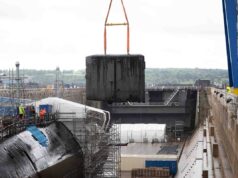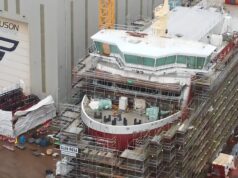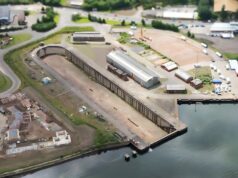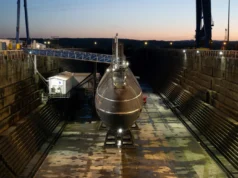The future of Ferguson Marine, the shipyard at the centre of a major political and financial debate in Scotland, was the focus of a recent meeting of the Scottish Parliament’s Public Audit Committee.
The shipyard, which has been publicly owned since 2019 following its nationalisation amid financial difficulties, has faced scrutiny over project delays and cost overruns. Discussions at the 5 February 2025 session highlighted both challenges and opportunities, with officials stressing that the yard’s long-term viability depends on stabilising operations and securing future contracts before any transition back to private ownership can be considered.
Andrew Miller, currently Non-Executive Chair of the Ferguson Marine Group having taken up his appointment in December 2022, revealed that a key contract is expected to be signed in March, with two or three other projects in the pipeline. While Miller acknowledged that some contracts are still being finalised, he assured the committee of the yard’s readiness to deliver once the deals are secured. “We would definitely like to deliver some good news in the next six months,” he said.
Stuart McMillan, SNP MSP for Greenock and Inverclyde, expressed optimism about the yard’s potential, stating, “I am quite sure that the workforce and the local community will be delighted to hear that.”
Miller provided further context, explaining that a long-term strategy involving five different workstreams could result in more work than the yard can comfortably handle, though not all opportunities are guaranteed. He estimated the potential market value over the next decade to exceed £500 million.
Over-Reliance on the Small Vessel Replacement Programme?
Jamie Greene, Conservative MSP for West Scotland, raised concerns about over-reliance on the Small Vessel Replacement Programme (SVRP), which the Auditor General previously flagged as a potential vulnerability.
However, Miller pushed back, stating, “It is not the case that 100 per cent of the eggs are in one basket.” While acknowledging that overseas shipyards have a competitive edge on price, he urged the government to consider the wider economic benefits of supporting domestic shipbuilding in Inverclyde.
Greene pressed further, asking if the government’s commitment to price-driven competition puts Ferguson Marine at a disadvantage. “Is your plea to the Government that it should look at the wider macroeconomic benefits of putting this work into Inverclyde?” he asked. Miller agreed, saying, “Yes.”
Public vs. Private Ownership
The long-term future of Ferguson Marine was another key topic. Greene questioned whether the yard’s public ownership affects its ability to compete for and win new business.
Gregor Irwin of the Scottish Government acknowledged the mixed implications, noting, “Most shipyards are not in public ownership,” but adding that there are publicly owned shipyards globally that remain competitive.
On the issue of whether the Scottish Government intends to return the yard to private ownership, Irwin stated that it remains the goal but clarified, “Now is not the appropriate time. Glen Rosa needs to be completed and delivered, and we need to find new work for the yard.” He indicated that any future market-testing exercise would be considered only once the yard’s situation stabilises.
Lessons from Dual-Fuel Vessel Challenges
The committee also discussed Ferguson Marine’s experience with dual-fuel LNG vessels, including the Glen Sannox and Glen Rosa, which have been plagued by delays and technical issues.
John Petticrew, head of Ferguson Marine, dismissed the notion that the vessels were overly complex. “Everybody keeps calling it a complicated vessel. I keep correcting them and saying that it is not; we just did not plan it right,” he said.
He emphasised the importance of lessons learned, adding, “We need to get back to working on a series of vessels, so that we can put the lessons learned into practice.” Petticrew was optimistic that Ferguson Marine could capitalise on its experience, turning it into a competitive advantage in future projects.
Greene sought reassurance that any future cost overruns, particularly with the Glen Rosa, would not divert funds meant for infrastructure improvements. He pointed to previous instances when loans intended for yard upgrades were absorbed by cost overruns. Irwin clarified that future funding decisions would be made by ministers but highlighted their ongoing commitment to investing in the yard, subject to due diligence.
Looking Ahead
The committee session painted a picture of a shipyard at a crossroads. While challenges remain, particularly in securing contracts amid international competition, Ferguson Marine’s leadership is optimistic about future growth.
With potential contracts, strategic diversification, and lessons learned from past projects, the shipyard hopes to achieve long-term stability and eventually return to private ownership. As Petticrew noted, “We just need to plan it better, understand the build strategy, and put a plan in place.”













Here it is again. The Scottish thing.
Yup, seems like it lol
You know we are Scottish, right?
Never have guessed.
The future is ferries. Loadsa ferries. And camper vans with the metal left over.